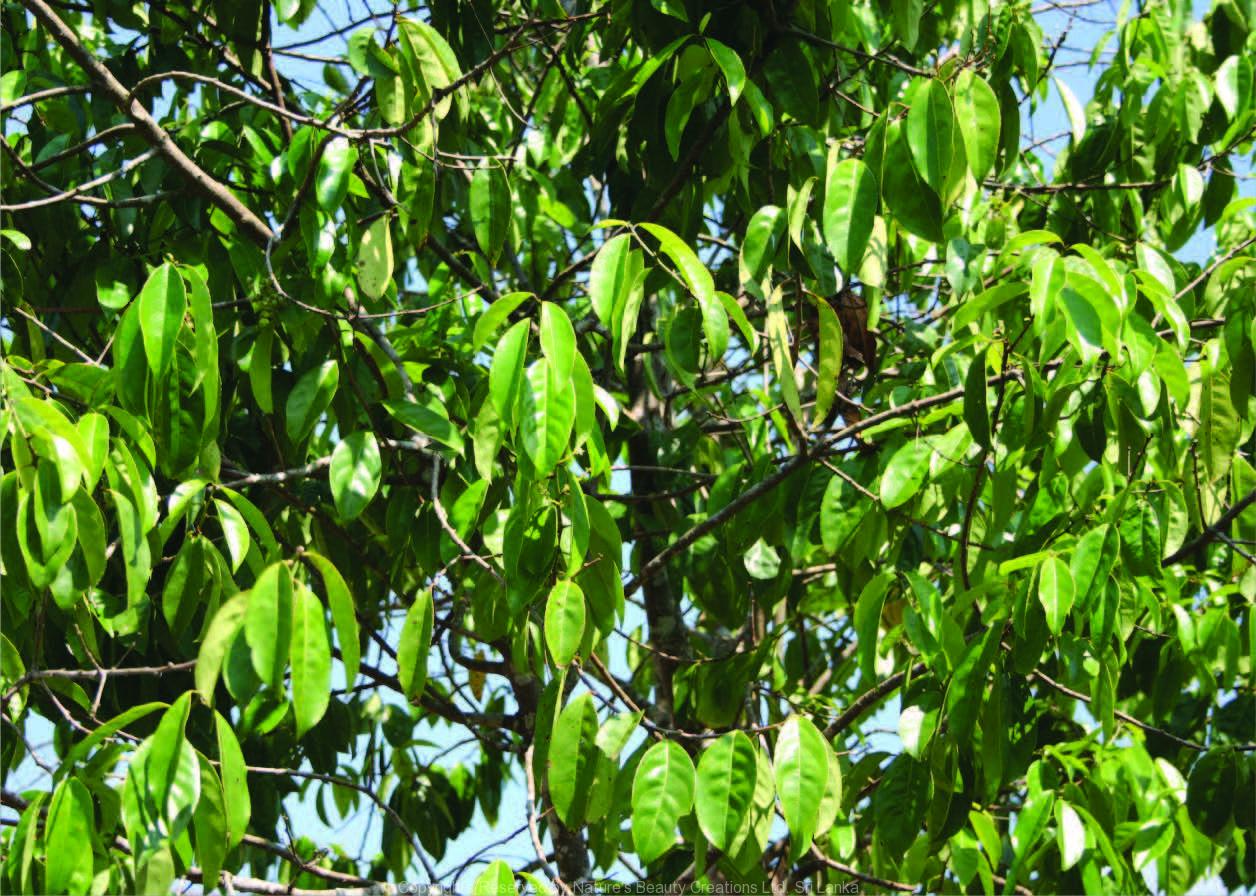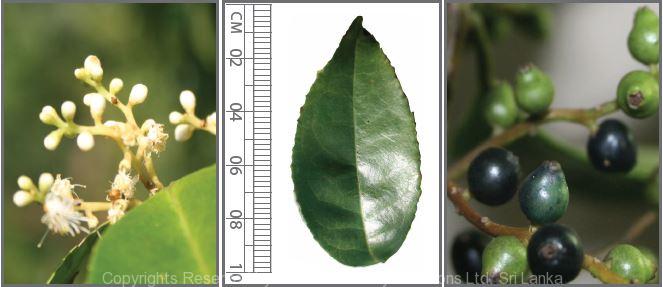

Traditional Knowledge
Useful plant parts :
Bark
Uses in traditional medicine :
- Bark decoction is used as a mouthwash for bleeding gums
- Dried bark powder is taken with bee honey to control internal bleeding
- Used in the treatment of phlegm
- Promotes healing of bones
Scientific Research
Chemical constituents:
Terpenes: arjunolic and asiatic acids glucosides from stem bark; L-arabinose, D-galactose and their derivatives from leaves
Bioactivity :
Leaf and stem extracts: antibacterial, antifungal; hexane and methanol extract of leaves: antidiabetic, anti-inflammatory, antioxidative and membrane stabilizing action on human red blood cells; methanol extract of bark: antidiabetic, antilipidaemic
Clinical:
References : Grosvernor, P. W. et al., (1995), Medicinal plants from Riau Province, Sumatra, Indonessia. Part 2: antibacterial and antifungal activity, Journal of Ethnopharmacology, 45, 97-111. Higuchi, R. et al., (1982), Triterpenoid saponins from the stem bark of Symplocos spicata, Phytochemistry, 21(4), 907–910. Sunil, C. et al., (2011), Antidiabetic effect of Symplocos cochinchinensis (Lour.) S. Moore.in type 2 diabetic rats, Journal of Ethnopharmacology, 134, 298–304. Sunil, C. and Ignacimuthu, S., (2011), In vitro and in vivo antioxidant activity of Symplocos cochinchinensis S. Moore leaves containing phenolic compounds, Food and Chemical Toxicology, 49, 1604–1609. Sunil, C. et al., (2012), In vitro antioxidant, antidiabetic and antilipidemic activities of Symplocos cochinchinensis (Lour.) S. Moore bark, Food Chem Toxicol, 50(5), 1547-53. Vadivu, R. and Lakshmi, K.S., (2008), In vitro and In vivo anti-inflammatory activity of leaves of Symplocos cochinchnensis (Lour) Moore ssp laurina, Bangladesh Journal of Pharmacology, 3, 121-124.
Copyrights Reserved By
Natures Beauty Creations



